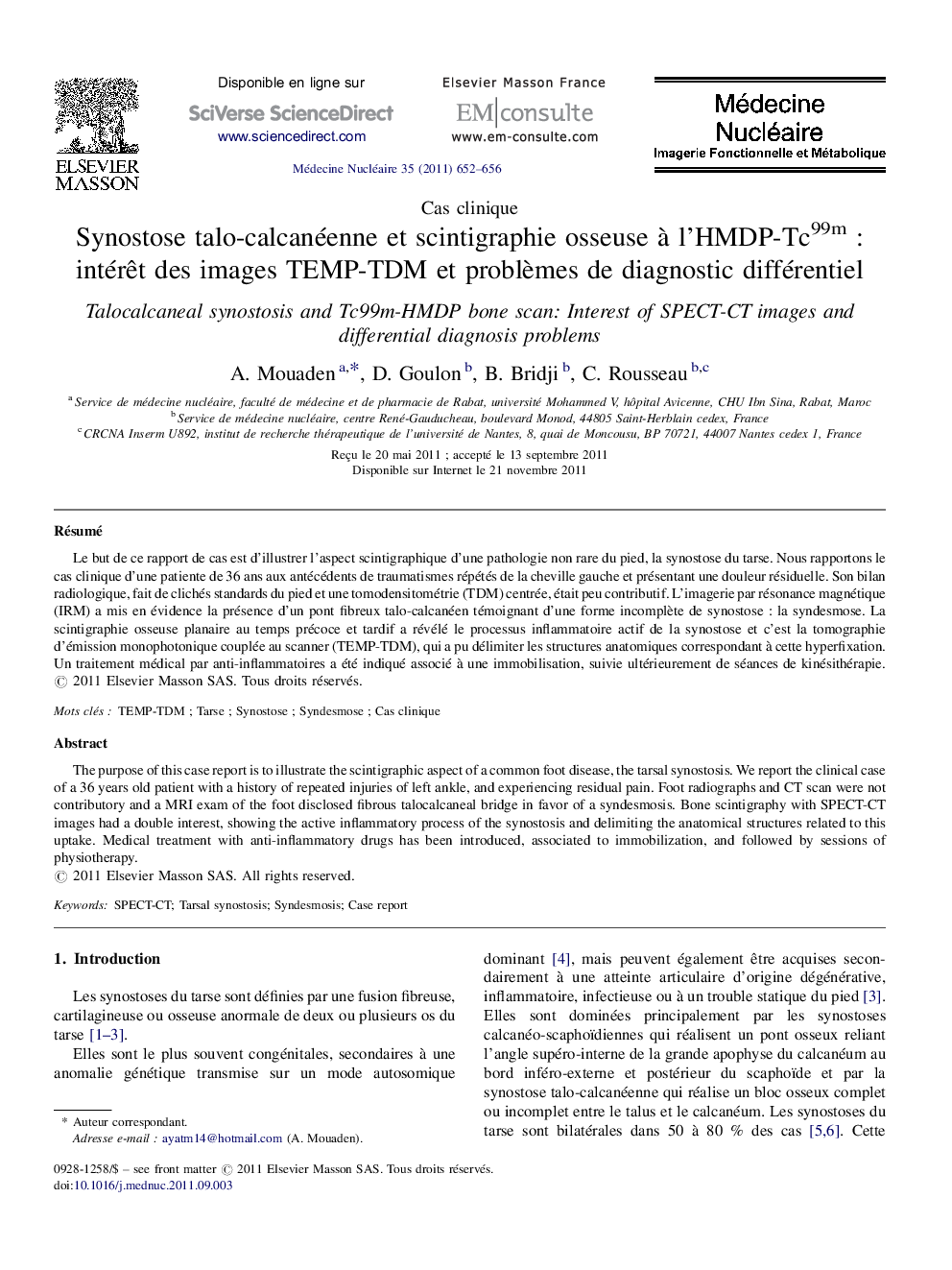| Article ID | Journal | Published Year | Pages | File Type |
|---|---|---|---|---|
| 4244156 | Médecine Nucléaire | 2011 | 5 Pages |
RésuméLe but de ce rapport de cas est d’illustrer l’aspect scintigraphique d’une pathologie non rare du pied, la synostose du tarse. Nous rapportons le cas clinique d’une patiente de 36 ans aux antécédents de traumatismes répétés de la cheville gauche et présentant une douleur résiduelle. Son bilan radiologique, fait de clichés standards du pied et une tomodensitométrie (TDM) centrée, était peu contributif. L’imagerie par résonance magnétique (IRM) a mis en évidence la présence d’un pont fibreux talo-calcanéen témoignant d’une forme incomplète de synostose : la syndesmose. La scintigraphie osseuse planaire au temps précoce et tardif a révélé le processus inflammatoire actif de la synostose et c’est la tomographie d’émission monophotonique couplée au scanner (TEMP-TDM), qui a pu délimiter les structures anatomiques correspondant à cette hyperfixation. Un traitement médical par anti-inflammatoires a été indiqué associé à une immobilisation, suivie ultérieurement de séances de kinésithérapie.
The purpose of this case report is to illustrate the scintigraphic aspect of a common foot disease, the tarsal synostosis. We report the clinical case of a 36 years old patient with a history of repeated injuries of left ankle, and experiencing residual pain. Foot radiographs and CT scan were not contributory and a MRI exam of the foot disclosed fibrous talocalcaneal bridge in favor of a syndesmosis. Bone scintigraphy with SPECT-CT images had a double interest, showing the active inflammatory process of the synostosis and delimiting the anatomical structures related to this uptake. Medical treatment with anti-inflammatory drugs has been introduced, associated to immobilization, and followed by sessions of physiotherapy.
